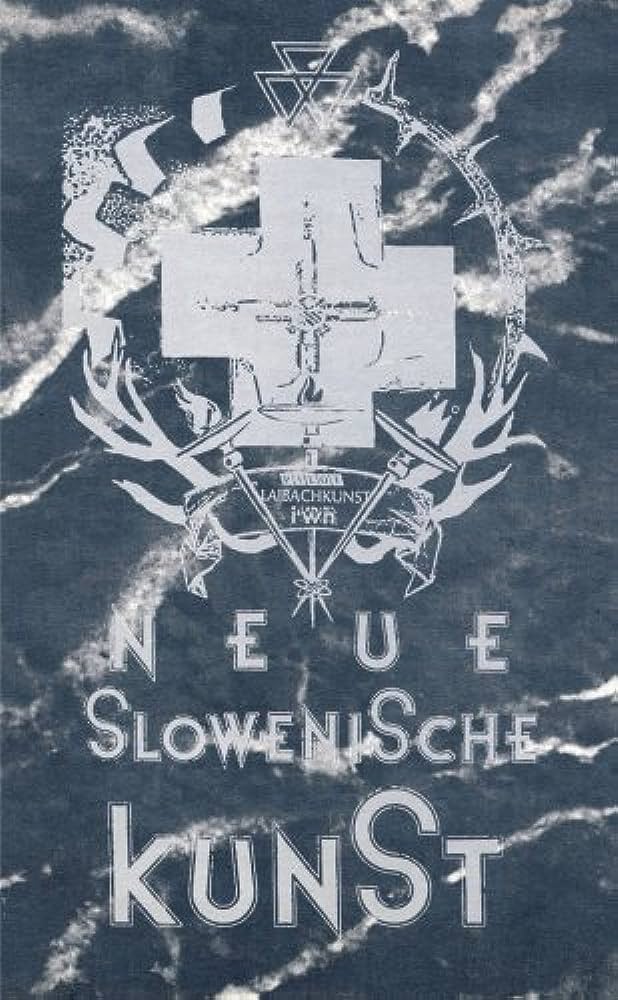 Edited by NSK (Amok Books; 1991)
Edited by NSK (Amok Books; 1991)
The magnum opus of the LA based, Stewart Swezey run underground publishing outfit Amok Books. Back in 1991 Amok (which also operated the fabled Amok bookstore) was operating amid the noise made by Stewart’s brother Ken and Adam Parfrey, who together formed the late Amok Press. That outfit closed its doors in 1989, with Parfrey instituting Feral House and Ken Swezey leaving for New York to found Blast Books. Amok Books, formed in 1987 alongside Amok Press, was stifled somewhat by the fact that in the fringe culture landscape Feral House and Blast Books essentially covered all the bases, with Parfrey making sure to co-opt the Church of Satan and Ken Swezey claiming the then-novel world of Japanese manga. Thus Stewart was obliged to seek out a more obscure (to Americans, at least) subject: the Neue Slowenische Kunst (New Slovenian Art), or NSK, collective.
The volume Ken Swezey turned out is a sumptuously designed, opulently packaged (and, needless to add, damn expensive) art book whose contents were collated by NSK itself. This means there’s nothing in the way of critical analysis or biographical distancing, with NSK’s own highly hermetic perspective being the sole viewpoint on display. This makes for a fascinating but exasperating book, as a little NSK goes a long way.
NSK was formed in 1984. Its members practice a form of politically-minded art that incorporates neo-fascist iconography and wholeheartedly embraces totalitarianism. Included in the NSK retinue are paintings, music, architecture, plays and films, each produced under the auspices of a different department within the NSK fold.
This book contains reproductions of NSK’s artwork, as well as play scripts, film stills, poetry and song lyrics, all of which evidence a rarified sensibility that falls somewhere between those of Antonin Artaud and Monty Python. Darkness and despair are constants in NSK’s texts (“We are the black ghosts of this world, we sing the mad image of woe. The explanation is the whip and you bleed”), while the paintings take the form of pop art collages, including a 1987 poster appropriating a painting by a Nazi artist that caused an almighty scandal (unsurprisingly, quite a few NSK works have been banned over the years). Of the architectural designs, they don’t seem too functional, while the film and play scripts offer pretty standard avant-garde frolics (sample dialogue: Q: “What did you dream tonight?” A: “I dreamt that I could not dream”).
Also included in these pages are copious interviews and manifestoes. NSK members, we learn, are bound by a VERY strict code of conduct, and evidently forced to speak in painfully verbose word salads (“A nervous and divided reaction of those addressed followed, undoubtedly as an unambiguous consequence of ideological instability and a verifier of the balance of power”). NSK’s ultimate goal, as outlined here, was nothing less than the formation of an entirely new state—and in the years following this book’s publication NSK has indeed conducted itself as a sovereign state, complete with passports and stamps (which, for the record, are treated as objects d’art by authorities, and so not valid for actual travel or postage).
What are we to make of all this? A Dadaist provocation? A serious attempt at political subversion? Or simply a bad joke gone too far? I’m willing to give NSK the benefit of the doubt, as its intentions appear to be sincere, but its outrageously rigid, humorless stance lends itself to parody. If one were to do a spoof of a European art collective this book is very likely how it would look/read.
